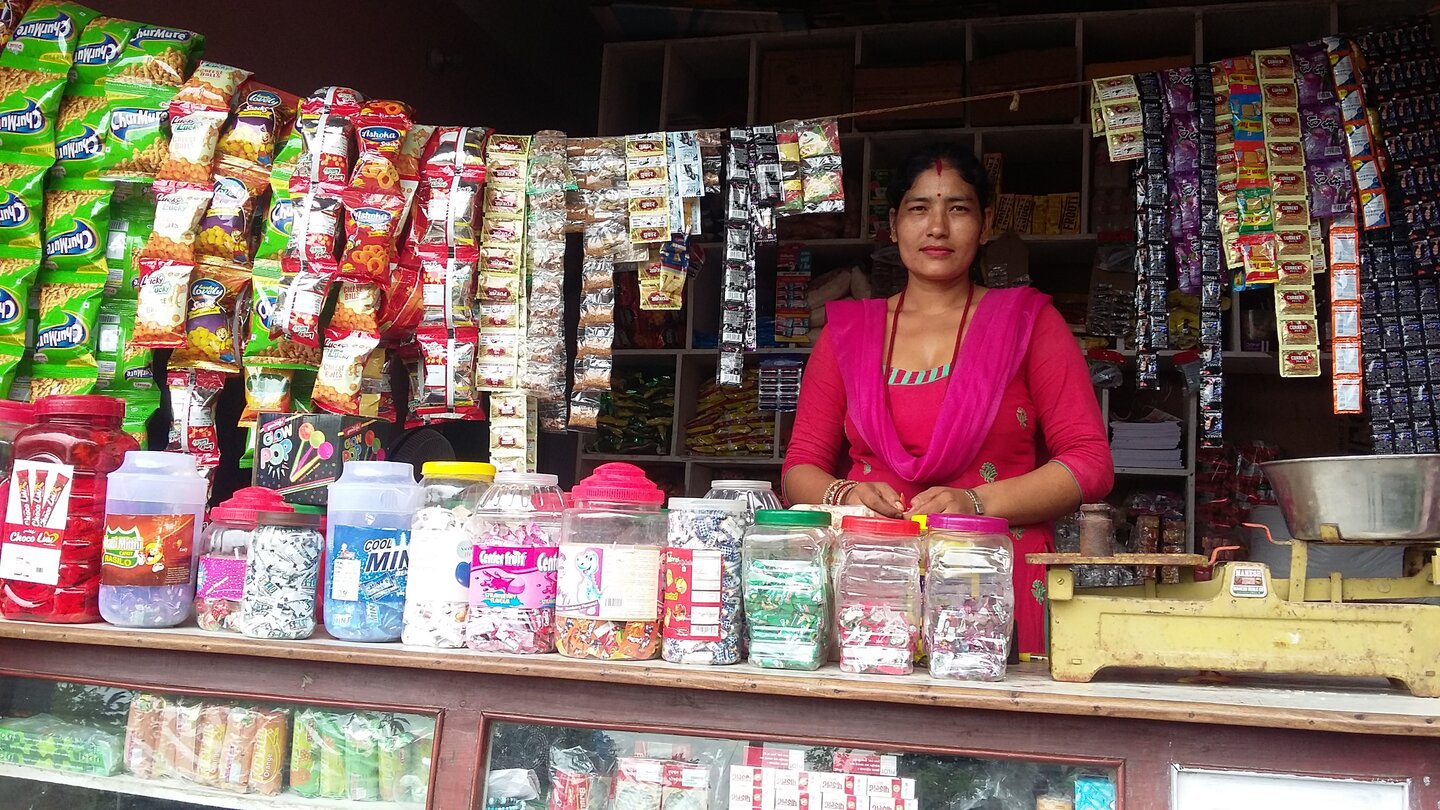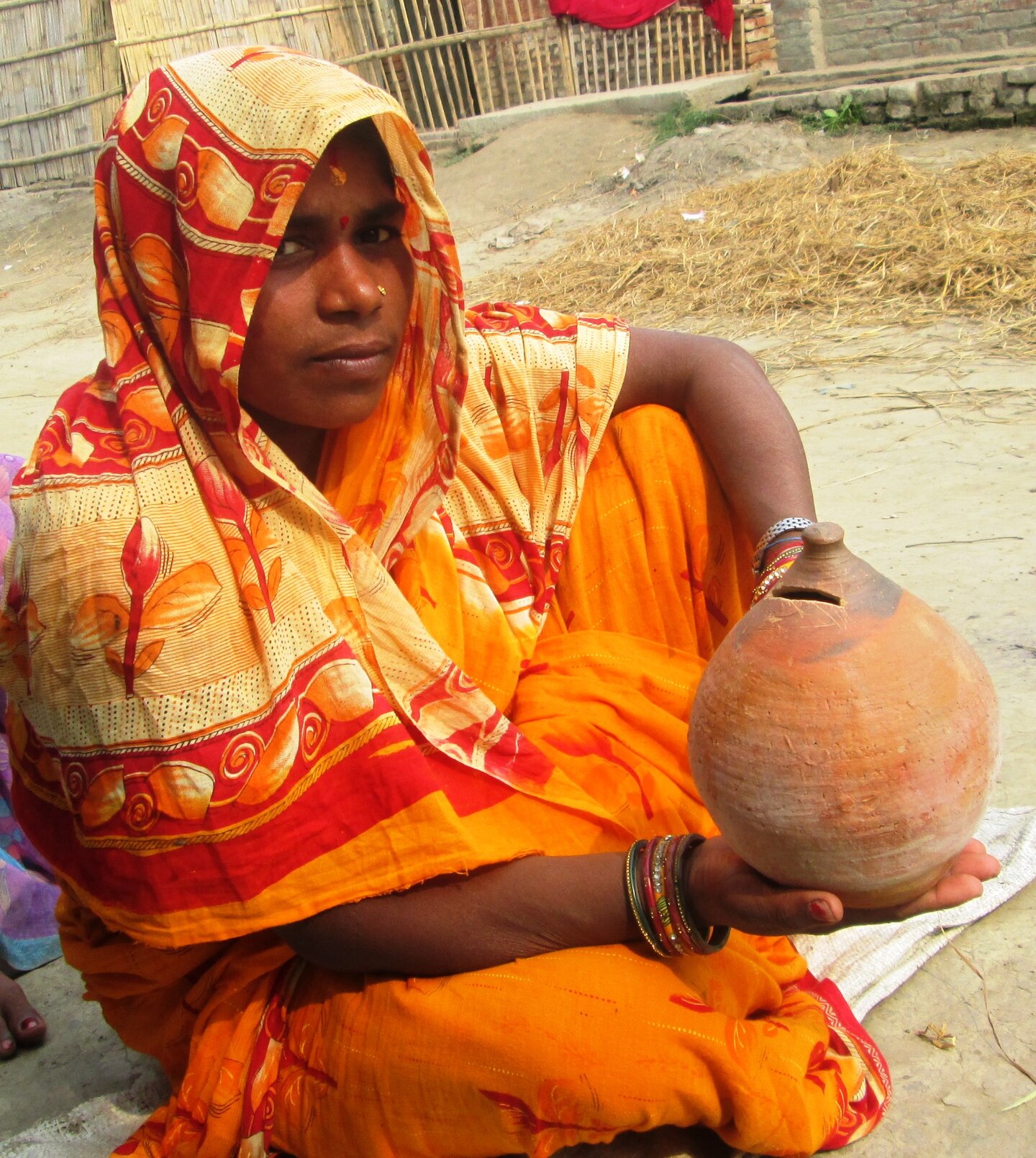The SDC project Safer Migration (SaMi), with technical assistance from Helvetas, provides financial literacy training to the families of migrants – in particular, to the women left behind. Thanks to better financial management, migrants’ families are now in control of their budget and able to save (more) money. Some use these additional resources to start income-generating activities. This changed behaviour also improves family relations.
In Nepal, many households turn to foreign employment for their livelihoods (see Box). From July 2016 to June 2017, more than 415 000 labour permits were issued to Nepali citizens – mainly young men – willing to work in the United Arab Emirates, Saudi Arabia, Qatar or Malaysia. During this time, remittances to Nepal totalled 695 billion Nepali Rupees (NPR) (US$ 6.2 billion), about 30 percent of the country’s GDP.
Nearly half of Nepali households receive remittances, but many remain ill-equipped to make considered use of this money. Remittance management is often poorly discussed prior to migration and can cause tensions within the family.
The Safer Migration Project (SaMi) is a bilateral initiative of the Governments of Nepal and Switzerland, implemented jointly by the Nepali Ministry of Labour, Employment and Social Security and Helvetas. Its goal is to promote safer and more beneficial migration, by supporting migrants in taking informed decisions on foreign employment and linking them to support services throughout the migration experience. Together with the Nepal Federation of Savings and Credit Cooperative Unions Ltd. (NEFSCUN), SaMi developed a training course on financial literacy. The course targets remittance-receiving households, especially the women left behind. Its 28 modules are conducted in the villages and help participants to apply the principles of financial management. They practise making family budgets and planning expenditure and savings. They also learn about services of financial institutions, entrepreneurship and how to draft a business plan.
Between 2014 and 2018 SaMi supported nearly 4 800 persons, of which 97 percent were women. Activities covered the districts of Khotang and Ramechap (Hill region), and Sunsari, Sarlahi, Nawalparasi and Kailali (Tarai lowlands).

An assessment of project activities undertaken in October 2017 found:
- Changed behaviour on financial management: About 83 percent of the participants now keep household records and 67 percent prepare a household budget.
- Substantial increases in savings: Before the training, only 13 percent of the households reported saving; after training, 67 percent did. Monthly savings per household increased by 25 percent on average, from NPR 637 (US$ 6.0) to NPR 810 (US$ 7.6). The increase was stable 12 months after the training.
- Initiation of income-generating activities: Increased savings led several participants to invest in new activities such as farming (for subsistence or sale of products).
- Use of (semi-)formal financial institutions: Most participants opened accounts in banks, microfinance institutions (MFIs) and cooperatives. The use of MFIs rose from 12 to 57 percent among participants.
- Women’s empowerment: Increased capacity in financial management strengthened women’s position in taking household decisions on spending, reducing the need to “ask for permission” for every expenditure.
- Improved family relationships: Regular in-house discussions on the best use of money improved mutual trust between family members at home and migrants abroad.
Adequate capacities to manage remittances are a prerequisite for securing the financial benefits of foreign employment, for their productive use and for ensuring that migration contributes to development. SaMi will now test the modalities for the institutionalization of this successful approach.

Migration dynamics in Nepal
Migration – both internal and international – has increased over the past decades in Nepal. Internal migration increased sixfold from 445 128 migrants in
1971 to 2 654 047 in 2011, and mostly takes place from the Hills to the Tarai lowlands and from rural to urban areas, mainly as a result of regional imbalances in the distribution of resources, access to services, poverty, unemployment and difficult livelihoods. The proportion of the population living in the Mountain and Hill districts has declined from 62 percent in 1971 to 50 percent in 2011 and is expected to fall to 47 percent by 2031. From 2001 until 2011, eight Mountain and 19 Hill districts showed a negative growth rate. In parallel, international labour migration has long been a key characteristic of Nepal, with India the main destination until the end of the 20th century. In the last two decades, overseas migration to the Gulf and Malaysia has gained enormous momentum. While the majority of the 415 000 Nepali citizens going abroad for employment last year came from the densely populated Tarai, international migration from the Hill and Mountain districts is increasing. Today, most international women migrants come from the Hills. Foreign remittances per head are higher in the Hill districts (NPR 34 283 [US$ 315] per month) than in the
Tarai districts (NPR 24 102 [US$ 221]).
Lessons learned
- Long-term training for lasting results:
28 modules are conducted over five to seven months, giving participants time to learn, digest and apply the new knowledge.
- Involve the head of household / man:
This will increase the likelihood that the women have a say on the use of the remittances and can make use of the acquired tools.
- Adapt methodology to local context:
Literacy rates in the Hill districts are higher than in the Tarai, giving women a stronger position in the household and thus a more central role in remittances management.
- Link with other support services:
The capacities developed through the training may lead participants to request other types of support, e.g. to initiate income-generating activities.

